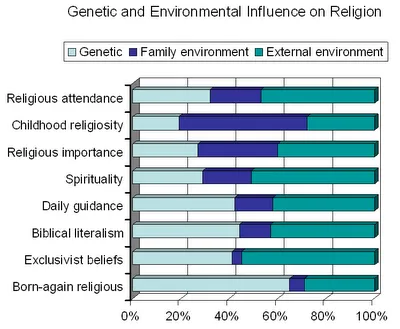Religieus fundamentalisme zit in de genen
Dat blijkt uit onderzoek m.b.v. tweelingen.
Het onderzoek wordt hier heel beknopt samengevat:
It's a fairly standard twin study. They took a sample of around 600 identical and non-identical twins from the National Survey of Midlife Development in the United States (MIDUS), and looked at a number of religious characteristics.
Basically, their analysis allows them to tease out the variations that are shared by identical twins but not by non-identical ones (genetic factors), by non-identical twins (family factors or shared environment), and that differed even among non-identical twins. This last factor was put down to the effects of external environment (i.e. things that happen in you life that aren't shared by your twin).
Het resultaat van het onderzoek:

Ga verder met lezen
Dit vind je misschien ook leuk
Laat mensen jouw mening weten
Lees ook
Loading


